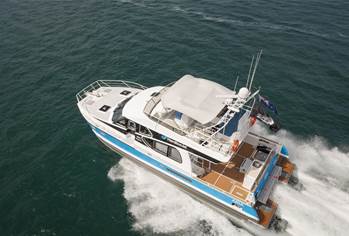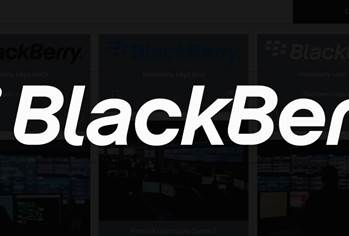When a customer walks onto the lot at a Holden dealership today, chances are they will drive away in the latest up-spec model within literally minutes. And they will be happy to never own that car either.
In a testament to just how dramatically the digital ‘as-a-service’ business model is changing the mainstream economy, the iconic Australian brand is now pivoting towards a diverse hybrid customer offer that mashes-up Uber, on-demand car sharing, rental and ownership.
For the last century, the business of selling cars has been fundamentally based on the idea of manufacturing for ownership.
This year, that changed thanks to a fundamentally on-demand model dubbed ‘Maven’; the as-a-service play Holden’s parent company General Motors took a big punt on three years ago.
Today, Maven isn’t a niche or a beta, it’s a mainstream car lot offer. And it’s business DNA is digital to the core.
Driving passion for technology
As the likes of Uber decimated traditional fleet sales to buyers like taxis, Detroit wasn’t about to stand still, especially not after the auto industry’s near-death experience delivered by the Global Financial Crisis.
The bottom line is Holden and GM now care less about you buying one of their new cars; what they really want is people wanting to drive them.
Like the aviation business, machines that don’t move don’t make money, so GM and Holden needed to urgently redesign how people commercially accessed their products.
Maven’s international evangelist is Anthony Riemann, whose official title is director, strategy and urban mobility, GM International, and kicked off 2019 with a blitz of tub thumping and horn blowing to get the brand into the Australian market.
He’s as Australian as a ute, but pushing smarts up the line within GM as it necessarily retools. It’s the business equivalent of a skunkworks.
“About three years ago, GM made a number of significant investments into the future of mobility, one of them being launching our own mobility brand called Maven,” Riemann tells iTnews, noting it was initially focused on the US car sharing service market.
That quickly morphed into a “a rideshare rental service” that essentially pushed current model vehicles to the likes of Uber drivers.
Riemann says the push came after a lot of work “researching and seeing that consumers are starting to think differently about how they access the car, had different needs, but still wanted access to cars.”
“GM thought it was time to get into that space and build a business that taps into new customers and learns what that's going to be like as the ownership evolves into the future.”
But to successfully break into that space GM, Holden and Maven realised the way people accessed cars needed to change dramatically and technology was the key. Literally.
Deliberately losing your car keys
While keyless vehicle entry has been around for decades, the reality is it’s for the most part relied on some sort of zapper or signal sent to a car’s central locking system.
Share cars, for the most part have relied on some sort of proximity device, usually a smartcard, to act as a proxy to gain entry, often with a decent retrofitting or modification cost attached.
So to get around that, Holden and GM started building-in technology that allows share car users to unlock vehicles using a smartphone handset via an app, essentially replacing a physical key with a cryptographic one.
Riemann says that it’s the convenience factor that really drives people to embrace car sharing, so that meant coming up with a solution that not just functioned but differentiated the Maven customer access experience from others.
That meant pushing a lot of smarts into the Maven app so that customers could easily sign-up and create a profile, see what cars were where (the depot is the Holden dealership) authorise payment and unlock the car and just start driving.
“It's a true painless experience, so your phone is your key. You unlock the car from your phone,” Riemann says, adding that because Maven is shifting top-end models, push-to-start is standard.
“That's probably one of our big differentiators. Others, you have swipe cards, you have keys in the car, or rental companies you go to a desk and you pick up the key. With Maven it's all done through your phone.”
Who’s really driving this show?
As anyone who’s ever rented a car will attest, the paperwork involved can be cumbersome and time consuming, not to mention the well documented padding and prodigious gouging across everything from insurance to minor damage fees.
So for customers to be able to walk into a Holden dealership, jump in and just drive away with a few clicks, Maven knew it needed some pretty robust know-your-customer, payment and security functionality.
In reality that means Maven must necessarily vet the people driving its cars. That means not only checking identities, but that a driver has a functional licence.
While that licence checking process is headed towards automation in the US, Australia’s different jurisdictions and motor registries mean that it’s still a human looking for the time being.
In a perfect world a credential like a digital ID powered by facial recognition would be the ideal driver check and car key combined, but will likely remain an aspiration until registries are centralised.
“Maven is already working through with a company that does that globally,” Riemann says. “And we would look to adopt that in Australia.”
“In the US there's a central database that you can tap into to check license and do that match and verification. In Australia every State has a slightly different repository in process for checking the validity of licenses. Having that set up in Australia is probably going to be a little bit more effort than it is in some other countries that GM operates.”
Making digital pay its way
At the moment Maven’s payments are essentially run on credit card rails for two basic reasons. The first is ease of integration with the app, with card schemes already offering a mature product in that space.
The second is the ability to pre-authorise payments from drivers in terms of what they estimate their usage will be. Hourly, daily, weekly … it really boils down to a usage based model where you pay as you go.
It also means Maven can cover itself for unfortunate incidentals. Infringements, tolls the stuff drivers should pay but sometimes overlook.
“Often, I think in any industry, customers don't enjoy paying for things that they don't want to pay for,” Riemann observes.
It’s not a big problem, but the fact that drivers are accessible via the app means it can ping them when they get pinged, especially in the case of fixed or mobile cameras that often come as an unwelcome surprise in the snail mail.
And while drivers who don’t pay their infringement dues can be easily excluded, that's not necessarily the best customer service option.
In the world of Uber driving, where car access means the difference between a gig or no gig, the option of progressively paying down fines is an obvious goodwill and loyalty winner.
“We've got our own follow up process with our customers,” Riemann says. “We respect them and their needs when sometimes they can't pay straight away, so we do have a follow up process to meet their needs where possible. It's not a large percent that have those sorts of issues.”
The flexible payment approach shouldn’t be a complete surprise, especially given the auto industry has been dealing in forms of finance and credit since it started. It also logically follows that as on-demand car access increases, there needs to be a way of managing customers without cutting them off.
There’s still a way to go, but Maven is up and running. Riemann insists the model is in for the long haul and adds new drivers rather than cannibalises the existing market.
“We're seeing a lot of customers that come through Maven haven't often considered to buy a car because it's a large capital outlay,” he says.
“They don't want the long-term three year commitment. Renting from Maven gives them that flexibility to do short-term, medium-term, long-term, however their lifestyle changes. The brand is getting a lot more cars on the road, which obviously leads to more sales, more people in showrooms.
Coming next: How Holden reengineered driving value with data…




_(20).jpg&h=140&w=231&c=1&s=0)




_(26).jpg&w=100&c=1&s=0)

 iTnews Executive Retreat - Security Leaders Edition
iTnews Executive Retreat - Security Leaders Edition












_(1).jpg&h=140&w=231&c=1&s=0)



